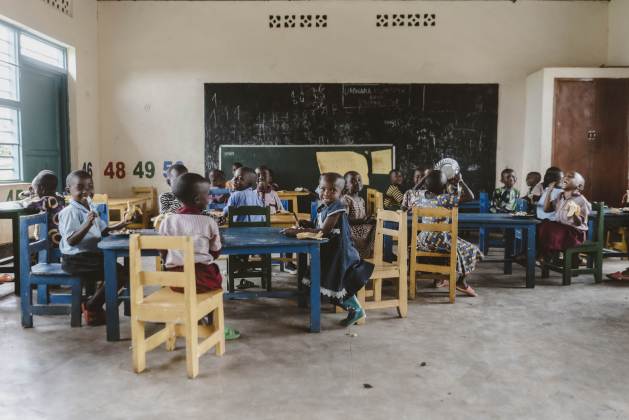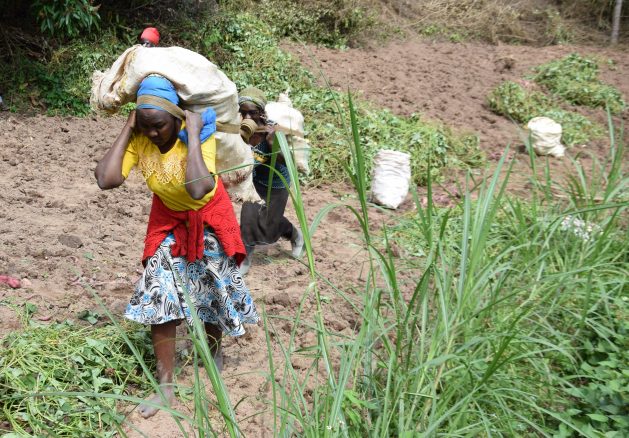Fighting Malnutrition and Changing Mindsets in Rwanda — Global Issues
ROME, Nov 06 (IPS) – Of the many things one might associate with a modern teenager, passion for wholegrain food is probably not the first that comes to mind. An innovative school-meals project in Rwanda, however, has young people singing its praises.
“Eating wholegrain maize makes our bodies strong and healthy,” said Julienne, a 15-year-old student at Kibirizi primary school in the Nyamagabe district in the south of the country.
“It is very tasty and nutritious.”
Julienne is one of thousands of Rwandan students who have been getting school meals as part of a UN World Food Programme (WFP) project in which fortified refined maize meal has been replaced by a fortified wholegrain version.
The fortified wholegrain maize meal is used to make “kaunga”, a sort of stiff porridge that is served with beans and vegetables in schools.
It is an exciting trial for WFP, which was awarded the Nobel Peace Prize in 2020 for its efforts to provide food assistance in conflict zones and to prevent the use of hunger as a weapon of war, to integrate wholegrains into school meals.
Food is usually fortified to reduce micronutrient deficiencies in the people who eat it by adding vitamins and minerals to the refined versions of staple grains.
Fortification of wholegrain flours, where virtually all the grain remains in the processed product, has largely been unchartered territory up to now.
But it is potentially a promising way to increase the micronutrient content while maintaining the health benefits of wholegrains, which provide more protein, fibre and micronutrients than refined foods.
Wholegrain foods also have a cost advantage over refined versions because a higher yield is extracted from the raw materials.
So getting people to acquire a taste for wholegrains is a good way to boost nutrition and food security.
The WFP project in Rwanda, which was launched in 2021 in partnership with The Rockefeller Foundation, is doing precisely that. The Rockefeller Foundation has also enlisted the help of a local partner, Vanguard Economics, to support the project.
The WFP Country Office has reported a big shift in student preferences thanks to the programme, with 97% saying they preferred the wholegrain versions to the refined equivalent because they liked the rich taste.
It also led to parents asking where they can buy the product on the market.
“The more nutritious foods children eat, the more active they are, and they perform better in school too,” said Faustin, Julienne’s father.
“I like the taste of the wholegrain maize and I would like to add it to the food we eat at home so that Julienne’s siblings can also enjoy it”.
WFP buys the fortified wholegrain maize meal from the same miller it got the fortified refined maize meal from.
“Before the pilot (project), fortified maize meal, purchased from a local supplier, was already a main component of school lunches along with fortified rice, fresh vegetables from school gardens, beans, fortified oil and iodized salt,” said WFP’s Tiina Honkanen.
“Together with The Rockefeller Foundation, we saw that if we could work with the existing WFP supplier miller to fortify the wholegrain maize meal instead of the refined flour, we could further increase the nutritional value of the school lunches, combining the benefits of both fortification and wholegrain, without having to change the school meal.
“We did not try to introduce a completely new product but focused on a food that was already being eaten”.
The project also helps the local economy. WFP supports smallholder farmers to improve their quality and yields and connects them to viable markets to sell their supply. Such is the case for a number of WFP-supported maize farmers, who sell their maize to the WFP supplier miller who produces the fortified wholegrain maize meal.
“Before, getting buyers was not so smooth. What excites me most is knowing that WFP buys to distribute in school meals,” said Immaculée, a farmer from Nyaruguru district of Rwanda.
“It feels good to know that your produce is reaching children in your very own community.”
Aside from the success of the project itself, what makes it especially worthy of attention is the potential for it to be a model to replicate elsewhere. In fact, fortified whole maize meal is now enjoyed by 180,000 school children in Burundi and another 60,000 in Kenya, with exciting scale-up prospects in all three countries.
“The pilot demonstrated that the substitution (of refined foods with wholegrain versions) can be feasible, budget-neutral and be well accepted by students and the school community,” said Honkanen.
© Inter Press Service (2023) — All Rights ReservedOriginal source: Inter Press Service
Check out our Latest News and Follow us at Facebook
Original Source







